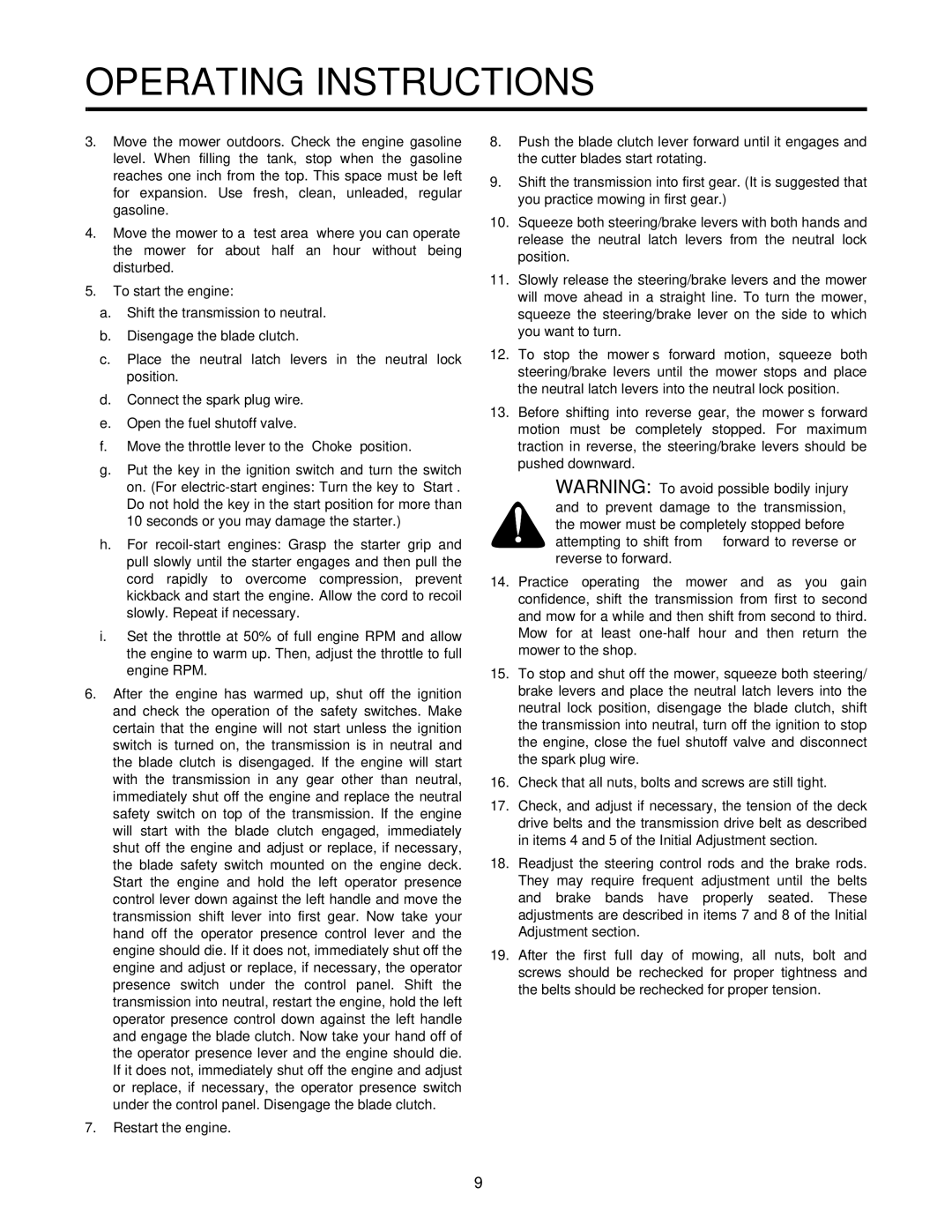G1336, G1548, G1332 specifications
Cub Cadet has long been recognized for its commitment to quality and innovation in lawn equipment. The Cub Cadet G1332, G1548, and G1336 are three standout models in their lineup, each designed to enhance the user experience with their unique features, technologies, and characteristics.The G1332 model is ideal for residential users seeking a reliable and high-performance mower. With a powerful engine, it delivers consistent cutting performance even in challenging conditions. Its 33-inch cutting deck allows for efficient mowing, making it suitable for medium-sized lawns. One of its standout features is the dual-blade system, which promotes a clean cut and provides superior grass mulching capabilities. The robust construction of the G1332 ensures durability, making it a dependable choice for homeowners.
On the other hand, the G1548 offers a larger cutting capacity with its 48-inch deck, making it perfect for larger properties or commercial use. This model is equipped with advanced features such as hydrostatic transmission, which allows for smooth speed changes without the need for gear shifting. The G1548's ergonomic design focuses on user comfort, featuring an adjustable seat and intuitive controls. Additionally, its mulching capability reduces the need for bagging, returning nutrients back to the lawn for healthier growth.
Meanwhile, the G1336 model combines power and precision with its 36-inch cutting deck. This model is particularly favored for its maneuverability, allowing users to navigate through tight spaces with ease. Equipped with a reliable engine and enhanced suspension, it provides a smooth mowing experience. The G1336 also boasts efficient fuel consumption, making it an environmentally friendly option while still delivering powerful performance.
All three models share several technologies that set them apart from competitors. The Cub Cadet SmartJet technology allows for efficient cleaning of the mowing deck, ensuring optimal performance and longevity. Furthermore, the inclusion of LED headlights on select models enhances visibility during early morning or late evening mowing sessions, increasing safety and ease of use.
In summary, the Cub Cadet G1332, G1548, and G1336 are exemplary machines that suit a wide range of mowing needs. Whether you're a homeowner managing a modest lawn or a professional tackling larger areas, these models provide reliable performance, innovative features, and the quality that Cub Cadet is renowned for. With advanced engineering and user-friendly designs, these mowers elevate the mowing experience, making lawn care more efficient and enjoyable.

